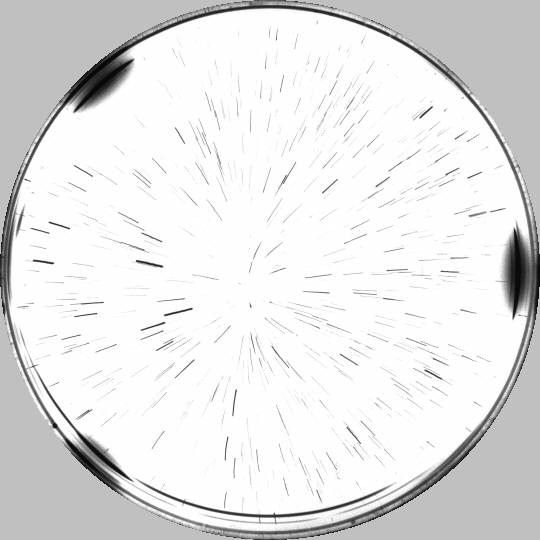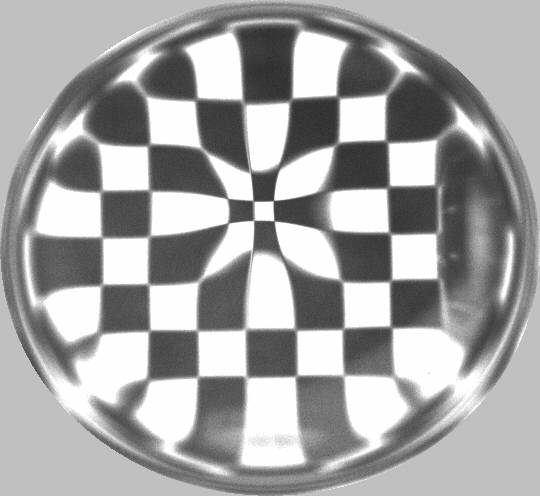
If you fill a shallow bowl with a liquid and heat it from below, you get Marangoni-Bénard-convection-cells. We are confronted with this phenomenon everyday. But normally we don't notice it, because they only become visible when you add mark-particles. This next picture shows silicon oil with graphite. The video shows the building up of the experiment with 3 lamps and a stove. Here it is shown, how the Bénard-cells organize themselves in 1 minute after stirring, and respectively the same illuminated with colorful light (or the same colorful video, in a bigger scale).

In order to follow the trajectories of the mark-particles, I take a long exposure photo. The added aluminum dust is ground and the contrast is increased by coloring the oil red. The video for that purpose shows 6 seconds (or the same video, in a bigger scale with 3 seconds). You can download the next image with a high resolution here.

If you change the geometry of the bowl, you can produce a mono cell. In these large cells you can take, for example, better temperature profiles. The video shows 80 seconds, respectively 19 seconds.

The next picture examines the deformation on the surface. It shows the reflection of a chessboard, using the oil surface as a mirror. With the distortion you can calculate the radius of the curvature of the surface. The video shows the setup of the experiment. The video shows the curvature of the surface at the heating up from 100 °C to 200 °C (4 minuts), respectively at the heating up and following cooling down (10 minuts).

Here you can download my diploma thesis as PDF-file (its written in German).